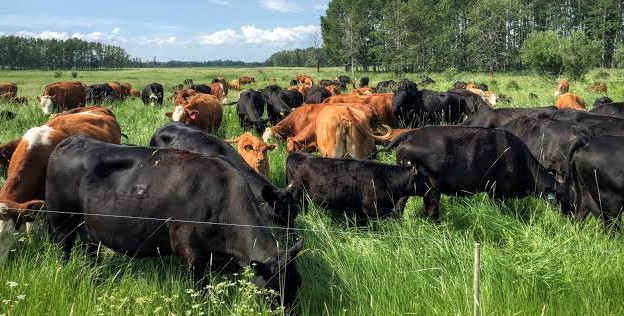
Grazing Management
A group to explore & discuss a range of approaches to grazing management and the impact of the... View more
Grazing Through Spring in a Mediterranean Environment
-
Grazing Through Spring in a Mediterranean Environment
Hi Folks,
I’ve just written a piece outlining some of the considerations that come with grazing pastures in spring, and making the transition from the growing to the non growing season. You can either download it or read it below. We would love to hear your input on how you negotiate this time of year in your grazing program.
Grazing annual dominant pastures through the different seasons in a Mediterranean environment is not without its challenges. Mid spring, or Kambarang, where we are now, presents us with a specific set of variables that have to be skillfully negotiated in order to maintain our animal, pasture and soil health.
As things warm up, winter pastures finally start to put on some good vegetative growth, and provide us with a a decent amount of quality forage. But, as the days get longer, and the rain subsides, these wet season annual plant species begin the transition from vegetative growth to reproduction, in preparation for the dormant season ahead. When the plants start to produce flower stalks and divert resources towards setting seeds, the forage quality declines. Before we know it, the composition of our forage goes from high protein/metabolizable energy relative to fibre, to that which is high fibre and low in protein/metabolizable energy. In order to preserve spring forage before it starts going rank we can make silage or hay, somewhere between these two stages, that can be then be used as feed in the non-growing season.
The act of grazing itself, initiates another cycle of vegetative regrowth, and pastures that have been well grazed remain vegetative for longer. However, as spring progresses, the tendency to set seed gets so strong that plants just bolt, regardless of whether they’ve been recently grazed or not. Setting seed takes a large amount of energy, compromising a plants capacity to regrow leaves, photosynthesize and replenish energy reserves. Both above and below ground growth are then stunted, leaving little in the way of resources to sustain healthy above (livestock) and below ground (microbe) populations.
In early spring, we ideally want to prioritize and graze some paddocks with high enough mob density to evenly take down and utilise all the forage, instigating some subsequent vegetative regrowth. The growth is strong at this time of year and feed should be plentiful, so we can afford to put other paddocks aside that will later be cut for hay and/or used as summer feed. As spring progresses, forage starts to get higher in fibre, and protein/metabolizable energy drops, making it harder to meet the nutritional needs of grazing livestock.
We may have to move our animals onto fresh areas faster than usual, as the high fibre, poor quality forage left behind, after they’ve picked out the best, probably won’t do. And while a higher portion of residual plant material is not eaten, it leaves us with more soil cover that protects and feeds soil microbiota over the hot, dry non-growing season. If we are to keep them in such areas for longer, supplementary feed becomes essential.
It’s worth noting is that when annual grass species that produce basal tillers, such as ryegrass, go into the elongation phase, they tend to temporarily stop producing new tillers. At this time, the only growing points sit at the apex of the elongating stalks, where they are vulnerable to grazing. If these growing points are then consumed by livestock, there is a lag before any new tillers develop, delaying the occurrence of new growth. Past this, when these species get to the booting phase and start to produce a flower head, their ability to produce new tillers returns and then a graze or cut, which allows more light into the crown, actually promotes the formation of new basal tillers. Once elongation commences, it is better to wait it out until the booting phase before grazing or cutting for hay!
When the season starts to dry out, the opportunity for any vegetative recovery, well, dries up. As far as the plants are concerned, we really want to move our livestock off unrecovered paddocks before this point and give them a chance to recover, before they set seed. These paddocks can be returned to and grazed in summer when everything has finished growing and died.
Hopefully, at this point, you’ve set aside some paddocks, for long enough to establish a good amount of standing feed, and can now start on your dry season grazing program. While the mature forage in these well rested paddocks is not of the quality you get with younger green season growth, it is certainly better than what you get on recently grazed paddocks, that bolt to seed before they can recover. There’s also a lot more biomass and with adequate protein, which may need to be supplemented, the livestock can still consume and get a decent amount of energy out of the fibrous material. Again, what doesn’t get eaten makes for a good layer of soil surface cover over summer.
Allowing good stands of annual plants to fully establish and set seed not only allows desirable plant species to reproduce, but also gives the microbiology that associate with and live on and around those plants the opportunity to reproduce. All of this sets the scene for a healthier soil and plant communities, and stronger and faster pasture establishment when the rain returns.
Some would argue that with annual pastures, we don’t need to rotate our animals in the dry season as the plants are dead and aren’t recovering anyway. There is some truth to this but… Livestock still selectively graze, consuming the most nutritious bits in an area first, leaving them with nothing but poor-quality forage in the latter part of the grazing cycle. This fluctuating plane of nutrition isn’t great for rumen health. If they are given the choice, a portion of the fibrous material that could be consumed, along with what higher protein forage exists, is ignored, and once the good stuff is gone, extra protein supplementation is required to further utilise that which is left behind.
When allocated larger areas, for longer, livestock just don’t trample uneaten fibrous material onto the ground as well, resulting in more oxidation and less effective decomposition/mineralisation of organic materials. There’s also prolonged compaction of high traffic areas and less even distribution of dung and urine.
So, a bit to consider.
How are you negotiating the season, we’d love to hear what your spring grazing program looks like?
Log in to reply.

